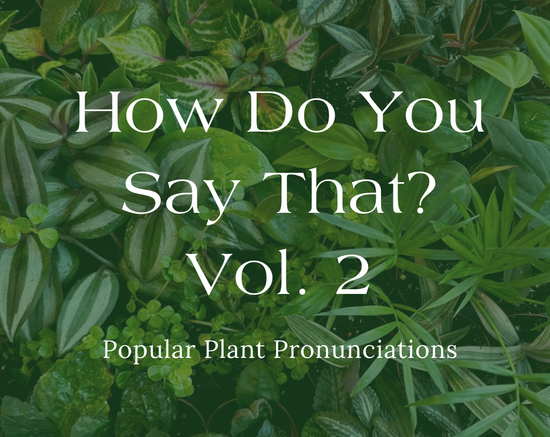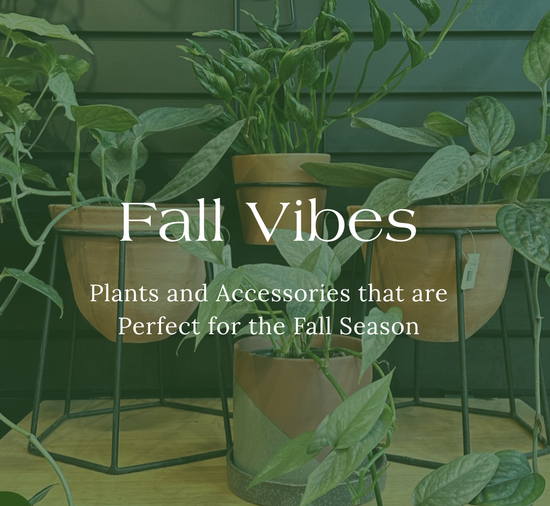
When it comes to growing happy and thriving houseplants, one crucial decision you'll face is choosing the right substrate. Whether it's soil, moss, LECA, perlite or a combination of them all, each substrate has its unique benefits and considerations. Explore some popular options to help you decide which substrate is best for your plants to make your green thumb journey a breeze. Get ready for the ultimate matchmaker showdown between plants and their perfect substrates!
Popular Types of Substrates
If we made a list of every type of substrate possible to grow houseplants in, this post would quickly become a very boring novel (uh no thank you)! So instead, here are some of the most popular and favorite substrates of Lost in the Forrest.
-

Soil
Shop SoilAh, good ol' soil, the tried-and-true substrate for houseplants. It provides essential nutrients, acts as a water reservoir, and offers stability for root growth. Opt for well-draining potting soil specifically formulated for indoor plants. It's like a cozy home for your green companions, providing the stability they need to flourish.
Try our very own chunky mix, great for both Aroids and Hoyas
-

LECA
Shop LECAFor those seeking an alternative to traditional soil, LECA (Lightweight Expanded Clay Aggregate) is the hydroponic hero you need. These little clay pebbles provide excellent aeration and drainage, reducing the risk of overwatering. Perfect for plants that prefer drier conditions or for those who enjoy the challenge of hydroponic setups. Plus, it's like a spa day for your plants, giving their roots room to breathe.
Note - LECA itself does not contain nutrients for plants so consider adding a splash of fertilizer to your watering schedule
-

Lechuza Pon
Shop PonAn increasingly more popular substrate coming into the substrate houseplant game is Lechuza Pon. It provides a balanced distribution of nutrients to the roots of your plant. Through this supply, the plant builds a consistent, compact root dispersion and can grow into a robust plant that will stay with you for a long time.
LECHUZA-PON is like a buffer that absorbs excess fertilizer and gives it back to the plant when needed. This natural nutrient storage prevents the burning of the roots through overfertilizing.
-

Perlite
Shop PerliteImagine a bunch of tiny white pebbles that lighten up your substrate and improve aeration – that's perlite for you! This lightweight volcanic rock is like a breath of fresh air for your plants, preventing compaction and enhancing drainage. Mix it with your potting mix to create a fluffy substrate that your plants will love.
The Perfect Match: Choosing the Right Substrate
Now that we've explored different substrates, it's time to play matchmaker. Consider the following factors when deciding which substrate is best for your plants:
- Plant Preference: Different plants have different needs. Research your plant's natural habitat to determine if it prefers well-draining soil, moisture-retentive moss, or the hydroponic vibes of LECA.
- Watering Habits: Think about your watering style. If you tend to be heavy-handed with the watering can, well-draining substrates like soil mixed with perlite can help prevent waterlogging. If you're a bit forgetful, moisture-retentive substrates like moss might be your plant-saving grace.
- Plant Size and Growth Habit: Consider the size and growth habit of your plants. Large plants with extensive root systems might benefit from the stability and nutrients of traditional soil, while epiphytic plants like orchids might thrive in moss or custom mixes.
Tips and Tricks for Substrate Success
To ensure your plants and their chosen substrates live happily ever after, here are some handy tips:
Adequate Drainage: Regardless of the substrate, always provide adequate drainage by using pots with drainage holes or adding a layer of pebbles at the bottom.
Mindful Watering: Understand the moisture needs of your plants and adjust your watering routine accordingly. Avoid overwatering, as it can lead to root rot, and underwatering, which can cause stress and dehydration.
Monitor Nutrient Levels: Different substrates offer varying nutrient-holding capacities. Regularly fertilize your plants with a balanced fertilizer to replenish essential nutrients they may require.
Adjust and Experiment: Don't be afraid to tweak your substrate choices based on your plants' responses. If a plant isn't thriving, consider adjusting the substrate or potting mix to better meet its needs.
Congratulations, aspiring substrate matchmakers! You're now armed with the knowledge to find the perfect substrate for your houseplants. Remember, it's all about understanding your plants' preferences, watering habits, and growth habits. Whether you opt for the classic soil, the light and lofty perlite, the hydroponic hero LECA, or a custom mix, your plants will thank you with vibrant growth and flourishing foliage. So, go forth and pair your plants with their perfect substrates, and let the green thumb romance begin!











